Wound Induced Hair Neogenesis – A Novel Paradigm for Studying Regeneration and Aging
October 2020
in “Frontiers in Cell and Developmental Biology”
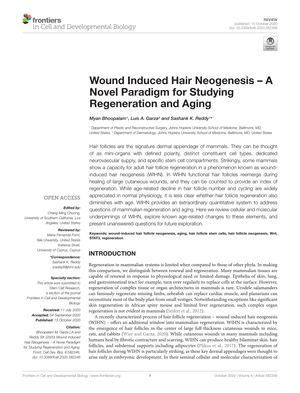
TLDR Wounds can regenerate hair in young mice, but this ability declines with age, offering insights for improving tissue regeneration in the elderly.
The document from October 15, 2020, reviews wound-induced hair neogenesis (WIHN), a process where hair follicles regenerate during the healing of large wounds in mammals, and its relationship with aging. It explains that while young mice exhibit strong WIHN, the regenerative ability in aged mice is less clear, with older mice showing poorer wound healing and potential aberrant hair follicle renewal cycles. The review also notes that the number of hair follicle stem cells (HFSCs) does not significantly change with age, but their regenerative capacity and the microenvironment do, with aged HFSCs experiencing changes in expression profiles and a decrease in supportive fibroblast density. Key signaling pathways like Wnt/ß-Catenin, Hedgehog, and IL-6/STAT3 are essential for hair follicle development and regeneration, with the latter also implicated in the reduced wound healing in aged mice. The document concludes that understanding the decline in regenerative capacity with age through WIHN could lead to interventions to improve regeneration in aging tissues.
View this study on frontiersin.org →
Cited in this study

research IL-36α Promoted Wound Induced Hair Follicle Neogenesis via Hair Follicle Stem/Progenitor Cell Proliferation
IL-36α helps grow new hair follicles and speeds up wound healing.
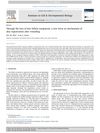
research Through the lens of hair follicle neogenesis, a new focus on mechanisms of skin regeneration after wounding
Hair can regrow in large wounds through a process similar to how hair forms in embryos, and understanding this could lead to new treatments for hair loss or scarring.

research Noncoding dsRNA induces retinoic acid synthesis to stimulate hair follicle regeneration via TLR3
Noncoding dsRNA boosts hair growth by activating TLR3 and increasing retinoic acid.
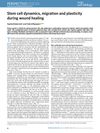
research Stem cell dynamics, migration and plasticity during wound healing
Stem cells help heal skin wounds by moving and changing roles, working with other cells, and needing more research on their activation and behavior.
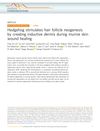
research Hedgehog stimulates hair follicle neogenesis by creating inductive dermis during murine skin wound healing
The Sonic hedgehog pathway is crucial for new hair growth during mouse skin healing.
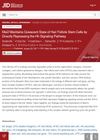
research Msi2 Maintains Quiescent State of Hair Follicle Stem Cells by Directly Repressing the Hh Signaling Pathway
The Msi2 protein helps keep hair follicle stem cells inactive, controlling hair growth and regeneration.

research Macrophages induce AKT/β-catenin-dependent Lgr5+ stem cell activation and hair follicle regeneration through TNF
Macrophages help regrow hair by activating stem cells using AKT/β-catenin and TNF.
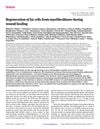
research Regeneration of fat cells from myofibroblasts during wound healing
Some wound-healing cells can turn into fat cells around new hair growth in mice.

research Inhibition of β-catenin signalling in dermal fibroblasts enhances hair follicle regeneration during wound healing
Blocking β-catenin in skin cells improves hair growth during wound healing.
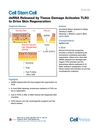
research dsRNA Released by Tissue Damage Activates TLR3 to Drive Skin Regeneration
Damage to skin releases dsRNA, which activates TLR3 and helps in skin and hair follicle regeneration.
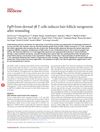
research Fgf9 from dermal γδ T cells induces hair follicle neogenesis after wounding
A protein from certain immune cells is key for new hair growth after skin injury in mice.
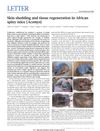
research Skin shedding and tissue regeneration in African spiny mice (Acomys)
African spiny mice can regenerate skin, hair, and cartilage, but not muscle, and their unique abilities could be useful for regenerative medicine.
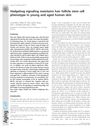
research Hedgehog signaling maintains hair follicle stem cell phenotype in young and aged human skin
Hedgehog signaling helps keep hair follicle stem cells the same in both young and old human skin.

research Wnt-dependent de novo hair follicle regeneration in adult mouse skin after wounding
Hair follicles can regrow in wounded adult mouse skin using a process like embryo development.
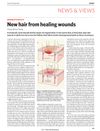
research New hair from healing wounds
Adult mice can grow new hair from skin wounds.
Related

research Wound Induced Hair Neogenesis – A Novel Paradigm for Studying Regeneration and Aging
Wounds can regenerate hair in young mice, but this ability declines with age, offering insights for improving tissue regeneration in the elderly.

research Through the lens of hair follicle neogenesis, a new focus on mechanisms of skin regeneration after wounding
Hair can regrow in large wounds through a process similar to how hair forms in embryos, and understanding this could lead to new treatments for hair loss or scarring.
![[Wound-induced hair follicle neogenesis: a new perspective on hair follicles regeneration in adult mammals].](/images/research/e871e440-9bb2-46aa-9ea7-dc07d0f733f2/small/4771.jpg)
research [Wound-induced hair follicle neogenesis: a new perspective on hair follicles regeneration in adult mammals].
Wound-induced hair follicle creation is a complex process in adult mammals that involves various cells and immune responses, and understanding it better could help improve skin healing strategies.
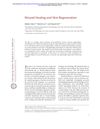
research Wound Healing and Skin Regeneration
Hair growth phase and certain genes can speed up wound healing, while an inflammatory mediator can slow down new hair growth after a wound. Understanding these factors can improve tissue regeneration during wound healing.

research The Influence of Flightless I: Regeneration versus Wound Healing
Blocking RANK signaling might help treat metastatic melanoma, but more research is needed.
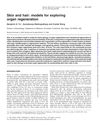
research Skin and hair: models for exploring organ regeneration
Skin and hair can help us understand organ regeneration, especially how certain stem cells might be used to form new organs.